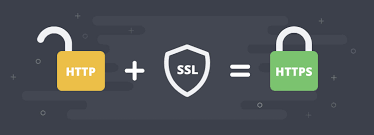
Mastering Web App Security in 2024: The Power of SSL and HTTPS
Securing a web application is essential in today’s digital landscape. As cyber-attacks grow more sophisticated, securing sensitive data such as user credentials, payment information, and personal data is more important than ever. SSL (Secure Sockets Layer) and its successor, TLS (Transport Layer Security), combined with HTTPS (HTTP Secure), are vital tools for protecting the integrity of your web app’s communications. we will discuss the role of SSL and HTTPS in securing web applications, explore the processes of obtaining and implementing SSL certificates, and cover best practices to ensure robust protection for your site.
What Are SSL and HTTPS?
SSL (and by extension, TLS) is a cryptographic protocol designed to ensure secure communication over a computer network. SSL encrypts data transmitted between the user's browser and the web server, making it unreadable to any third-party trying to intercept it.
HTTPS, on the other hand, stands for HTTP Secure, which is HTTP with SSL/TLS encryption. It ensures that all communications between a web application and the client are encrypted. In modern security implementations, HTTPS with TLS is the standard, and SSL has been phased out due to vulnerabilities.
Why Is SSL/HTTPS Important for Web App Security?
Data Encryption: SSL ensures that sensitive data transmitted between the server and the client is encrypted. Without encryption, attackers can easily intercept and read data.
Data Integrity: SSL prevents attackers from tampering with the data transmitted between a user and a web server. It ensures that the information exchanged hasn't been altered during transit.
Authentication: SSL certificates authenticate that a web application is legitimate and that users are interacting with the intended web service, not a malicious actor.
Boosts User Trust: Users are becoming increasingly security-conscious. A valid HTTPS certificate can foster trust among users and increase engagement or conversions.
SEO Benefits: Google considers HTTPS a ranking factor. Therefore, using SSL can positively impact your web app’s search engine rankings.
Regulatory Compliance: Many industry standards and regulations (such as GDPR, HIPAA, and PCI-DSS) mandate the use of HTTPS for protecting sensitive data, making SSL/TLS a critical part of legal compliance.
How SSL and HTTPS Work Together
- SSL Handshake: When a browser connects to a web server via HTTPS, the SSL handshake begins. This involves the exchange of cryptographic keys to establish a secure connection.
- Data Encryption: Once the handshake is complete, the browser and the server communicate using the encryption keys generated during the handshake. All data is securely encrypted as it travels over the internet.
- Decryption: The recipient of the data (the server or the client) uses the corresponding key to decrypt the data back into its original form.
The Role of TLS in 2024
In 2024, TLS (Transport Layer Security) remains the current protocol for secure communication, having replaced SSL. The latest version of TLS, TLS 1.3, includes several improvements, such as faster handshake processes and stronger security algorithms.
- Deprecated Versions: As of 2024, SSL and older versions of TLS (such as TLS 1.0 and 1.1) should not be used as they are considered insecure and vulnerable to attacks like POODLE or BEAST.
- TLS 1.3: TLS 1.3 is currently the most secure version, featuring better performance, stronger cryptographic methods, and reduced latency in handshakes. Web applications must adopt TLS 1.3 to ensure the highest level of security.
How to Secure Your WebApp with SSL and HTTPS
Step 1: Choosing the Right SSL Certificate: Before you can secure your web app with HTTPS, you need to obtain an SSL certificate. SSL certificates come in various types, and the one you choose will depend on your needs:
- Domain Validation (DV): This is the most basic form of SSL certification. The certificate authority (CA) verifies that the applicant owns the domain. DV certificates are typically issued quickly but offer minimal validation.
- Organization Validation (OV): In addition to verifying domain ownership, the CA verifies the legitimacy of the organization applying for the certificate. OV certificates provide higher levels of assurance to users.
- Extended Validation (EV): This certificate type offers the highest level of security and trust. The CA conducts a thorough vetting process of the organization. When a web app uses an EV certificate, the browser shows a green padlock and the organization's name, providing extra assurance to users.
- Wildcard SSL Certificates: If you have a domain with multiple subdomains (e.g., subdomain1.example.com, subdomain2.example.com), a wildcard certificate can secure all subdomains under a single certificate.
- Multi-Domain SSL Certificates: These certificates allow you to secure multiple domains (e.g., example1.com, example2.com) under one certificate.
- Let’s Encrypt: For developers seeking free SSL certificates, Let’s Encrypt provides domain-validated certificates. It automates the certificate issuance process, and while it offers basic protection, it’s a great option for startups or personal projects.
For Apache Web Server:
- Copy the SSL certificate and the private key to your server.
- Modify the Apache configuration file (usually
httpd.conforssl.conf) to include the certificate file and the private key file paths. - Restart Apache for the changes to take effect.
- Copy the SSL certificate and private key to your server.
- Modify the Nginx configuration file (
nginx.conf) to include the SSL certificate and private key file paths. - Restart Nginx.
- Use the IIS Manager tool to import the SSL certificate.
- Bind the certificate to your website in the “SSL Settings” panel.
For Apache:
RewriteEngine On
RewriteCond %{HTTPS} !=on
RewriteRule ^ https://%{HTTP_HOST}%{REQUEST_URI} [L,R=301]
.jpg)
nginx.conf file, add:- Secure Flag: Ensures that cookies are only sent over HTTPS connections.
- HttpOnly Flag: Prevents cookies from being accessed via JavaScript, protecting against cross-site scripting (XSS) attacks.
Best Practices for SSL and HTTPS Security in 2024
- SSL Labs: Provides a detailed report on your SSL/TLS implementation and gives a rating for your configuration.
- Qualys SSL Test: Another powerful tool for testing SSL/TLS security.

Leave a Comment